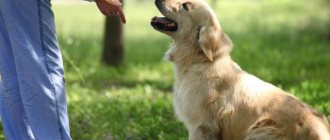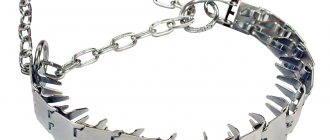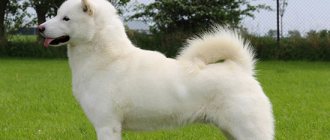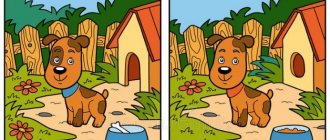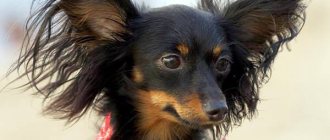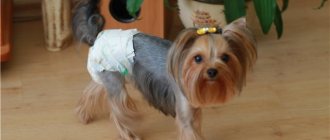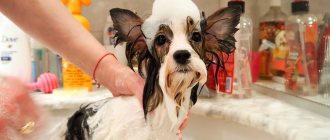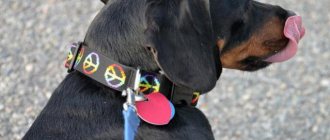Owners of almost all cat breeds are familiar with the problem of hair loss in their pets, when carpets, upholstered furniture, and even the floor are dusted with hairs.
The problem is especially acute during the molting period, although owners of long-haired cats are forced to resort to frequent brushing all year round, otherwise both the animal and the apartment will look untidy. The procedure for removing undercoat and hair is not pleasant for humans, since it is rare that a cat will sit quietly in place for a long time. Brushing also causes a lot of inconvenience for your tailed friend: accidental damage to the skin, pulling out tangled hairs, and a nervous environment.
Sometimes cats are taken to salons (or a groomer is called to your home), but there are many pitfalls here: it’s expensive (at least 500 rubles), the animal may be scared of a specialist, and for wayward purrs, the procedure is often done after anesthesia has been administered.
In order not to torment themselves and their pet, many owners purchase a furminator
- a kind of comb-trimmer with a comb-shaped blade and an ergonomic rubberized handle. How to choose a furminator for a cat will be discussed further.
What it is
The Furminator is a special grooming tool designed to comb out the undercoat and effectively remove dead hairs during periods of shedding in an animal.
A unique invention by professional American groomer Angie Porter, the FURminator looks like an ordinary rake comb only with very small curved metal teeth. The sharpened teeth on the blade of the fuminator capture the fallen hairs of the undercoat without affecting the immature hairs and awns.
Advantages
According to numerous reviews from pet owners, breeders and professional groomers, this useful device has more advantages than disadvantages.
Advantages of the Furminator over similar grooming tools:
- quickly and painlessly removes dead undercoat hairs without affecting the outer coat and guard hairs;
- accelerates the animal’s molting process by up to 90%;
- regular combing of the coat helps prevent the appearance of tangles and matting of the hair;
- treatment of strands with a furminator ensures uniform distribution of sebum along the entire length of the animal’s coat;
- in the process of combing out the undercoat, the blood supply to the animal’s skin improves;
- Proper processing of wool does not injure the skin and does not disturb the structure of the hairs of the coat.
The Furminator greatly facilitates the care of your pet's coat during shedding periods and throughout the year.
Feedback from cat owners about the furminator comb
Based on numerous responses from people who bought a tool for their pets, we can safely classify the Furminator as a useful cat fur care item. The following are some reviews from grateful owners:
- Review #1:
“My friend and I have been running a Scottish cattery for 5 years. Therefore, I can safely say that no slicker will remove the undercoat as well as a furminator. We comb our pets with American FURminator combs; there are no balls of wool anywhere, although the seals’ coats are very thick and they shed a lot...”;
- Review #2:
“Previously, when Barsik was molting, fur was everywhere. Particularly annoying were the red hairs that had settled on dark clothes. And it was unpleasant to see the cat’s hair on the kitchen table. The furminator helped me a lot, although I didn’t have high hopes for it. I was even surprised when I combed out a whole mountain of wool for the first time using this device...”;
- Review #3:
“I was forced to buy a furminator by misfortune: the cat swallowed hair to such an extent that intestinal obstruction developed. My cat, named Molly, by the way, loves it when I brush her: she purrs and caresses her. The hairs separate quickly, it takes me no more than 15 minutes to do everything…”.
What are there
Modern models of fuminators differ in size, length of teeth on the device blade, and design. The manufacturer of the device is also important.
Depending on the size, the following types are distinguished:
- X-small – with a blade width of 3.2 cm for dogs weighing up to 4.5 kg;
- Small – with a blade width of 4.5 cm for dogs weighing up to 9 kg;
- Medium – with a blade width of 6.7 cm for dogs weighing up to 23 kg;
- Large – with a blade width of 10.2 cm for dogs weighing up to 40 kg;
- X-Large – with a blade width of 12.7 cm for dogs weighing more than 41 kg.
Some manufacturing companies present a model range with only Small, Medium, Large sizes.
They also differ in the length of the teeth on the working part of the tool:
- combs with long teeth - intended for long-haired dogs with a coat length of 5 cm or more;
- Short-tooth combs – suitable for short-haired dogs with a coat length of up to 5 cm.
Manufacturers of modern furminators have provided various tool designs. In addition to combs with a solid handle, there are universal 2in1 devices with removable blade attachments for combing animals with different types of fur.
The first original furminators were created by the American trademark “FURminator deShedding tool”. Later, other companies specializing in grooming products began to produce similar tools.
Currently, among the huge assortment of furminators, there are many fakes. Cheap analogues of the original device are usually made of inexpensive materials, so the efficiency and service life of counterfeit instruments is not high.
When choosing, you should pay attention to the tools of the following manufacturers:
- "FURminator Ink" (USA);
- "Trixie" (Germany);
- "Foolee" (France);
- Vivog (France);
- "Hello Pet" (Taiwan);
- "Kudi" (China).
Who is not suitable for?
Unfortunately, this useful tool is not universal. Furminator is contraindicated for animals with poorly developed or absent undercoat.
Use is contraindicated in animals with thin, curly or curly hair. In this case, the use of the device may disrupt the structure and quality of the coat.
For pets with rough hair, a furminator can be used, however, breeders and experienced owners of wire-haired terriers and schnauzers claim that the use of this device is unacceptable for show animals. Even the best quality trimmer can cut off the awns and disrupt the structure of the cover.
This device is also not suitable for animals with long, flowing hair, since the sharp teeth of the instrument can lead to splitting or cutting of the hair, as well as disruption of the structure of the coat.
Breeds whose fur cannot be combed with a furminator:
- American Water Spaniel;
- Irish Water Spaniel;
- Portuguese Water Dog,
- Bedlington Terrier;
- Kerry Blue Terrier;
- poodle (large, small, miniature, toy poodle, including corded poodle);
- curly coated retriever;
- Bichon Frize;
- Bolognese;
- Maltese;
- papillon;
- phalen;
- havanese;
- Lövchen (small lion dog);
- Coton de Tulear;
- Chinese Crested Dog;
- Bergamasco Shepherd Dog (Bergamasco);
- bullets;
- Komondor;
- Irish Soft Coated Wheaten Terrier;
- Dandie Dinmont Terrier;
- Yorkshire Terrier;
- Afghan Hound;
- Lhasa Apso;
- shih tzu;
- Japanese chin.
Also, the use of the device is contraindicated for animals with damaged skin.
How to choose
When choosing a Furminator for your pet, you need to take into account the characteristics of the animal’s coat and size:
- for dogs with hair longer than 5 cm, you should choose a tool with long teeth marked Long Hair;
- for dogs with hair less than 5 cm long, you should choose a tool marked Short Hair;
- When choosing a tool, you should also take into account the size of the animal - the larger the dog, the larger the working part of the tool should be.
Also, when choosing, you should pay attention to the following details:
- The working part of a high-quality tool is made of high-strength steel - the teeth of the tool should not deform, rust or break off during operation.
- It is also worth paying attention to the shape of the teeth - a correct tool has a slightly rounded working part of the blade, while a fake tool has a straight one.
- On the blade of original FURminator tools, markings and a unique device number must be indicated on the blade.
- A high-quality device has a durable rubberized handle with a metal rod inside.
- Devices with removable attachments and the ability to change the blade are very convenient to use, but the working part of the device quickly becomes loose and becomes unusable.
A high-quality analogue and a cheap fake are not the same thing. As a rule, prices for counterfeit instruments are greatly reduced; the minimum price for a quality instrument is 1000-1500 rubles.
Where to buy a furminator
Owners, exhausted by the need for regular brushing with a regular comb, will probably wonder where to buy a furminator for cats? Let's consider several options:
- At a pet store or veterinary pharmacy.
Here you can purchase a high-quality furminator with a guarantee (usually 30 days), having received a sales and cash receipt in your hands. True, the price of goods in a pet store (or pharmacy) is almost always slightly overpriced (at least 800-900 rubles); - In the online store.
There are many offers on the Internet for the sale of grooming accessories at prices ranging from 400 to 2500 rubles. In addition, virtual stores often offer discounts; the seller offers to deliver goods directly to your home. In addition to Russian online stores focused only on the sale of pet supplies, you can also search for the furminator on large foreign Internet sites, for example, you can buy it really inexpensively on Aliexpress or Amazon. But delivery from afar can be quite long, and there is no certainty that the goods will arrive undeformed; - In hypermarkets (like Auchan or Lenta).
The only drawback of buying in such a place is the modest range of furminators.
How to use
It is recommended to treat your dog with Furminator during shedding periods 1-2 times a month, as well as in the off-season, but no more than 8 times a year. Too frequent treatments of the animal's coat can lead to the formation of bald patches, skin irritation and disruption of the coat structure.
It's very easy to use. Before the procedure of combing and removing dead hairs, it is necessary to prepare your pet.
Instructions for dogs with short hair:
- Before treatment, a pet with smooth and short hair needs to be bathed and dried with a towel or hair dryer;
- after the dog’s fur has completely dried, it is necessary to comb it with a regular brush and carefully examine the animal’s skin and make sure that there is no damage or irritation to the animal’s skin;
- Gently comb the body area from the back of the head to the tail;
- Next, you should comb the pet, moving from the center of the back to the sides, to the stomach and to the limbs;
- The head should be treated very carefully, without pressure or sudden movements.
When treating a pet with fur longer than 5 cm, you should follow separate instructions:
- examine the animal for tangles and damage to the skin;
- tangles and matted areas of the cover should be carefully untangled with a tangle cutter or comb; in extreme cases, they will have to be cut off;
- thoroughly wash and dry your pet’s fur;
- long hair should be combed in layers from bottom to top along the hair growth, lifting layer by layer and moving from the belly to the spine;
- After processing the body, you should carefully comb the limbs, tail, neck and head of the pet.
It is better to process the covering on the head and limbs of the animal, using a tool with short teeth and a smaller working surface.
Regardless of the type of coat of the dog, you cannot treat your pet against the growth of the coat. Movements should be soft and smooth. Too sudden movements and pressure when working with a tool can lead to damage to the skin and disruption of the structure of the axial hair.
The structure of cat fur
The fur of cats and dogs is a kind of hair. Periodically, the formation of new hair stops. After some time, the old hair falls out - shedding occurs. Then cell division of the hair follicle resumes, and new hair grows.
There are several types of shedding:
- Seasonal, associated with the change of season. It is typical for animals living on the street. All wool is renewed almost simultaneously.
- Permanent, in those individuals that live in the house. There is a periodic, gradual replacement of wool throughout the year.
- Physiological. This is a temporary process associated with certain periods: estrus, mating, pregnancy, feeding kittens.
Lost hair is everywhere in the apartment, creating inconvenience for owners and cats. To solve this problem, there are furminators for cats. To understand why to use them, it is necessary to consider the structure of the coat of cats.
Hair follicles in cats have a complex structure. From each follicle grow:
- The awn is the primary, or central (covering) hair. It is the thickest and longest, called the guide.
- 2-3 thinner and shorter hairs that surround the hair guide.
- Hair, even shorter, forming the undercoat.
- Downy hair.
The furminator for cats greatly simplifies this labor-intensive process.
Cats have the thickest fur. Its density varies in different parts of the body. The thickest, short covering hair—almost just fluff with undercoat—is located on the belly. The hair on the back is longer and thicker, but there is less of it.
